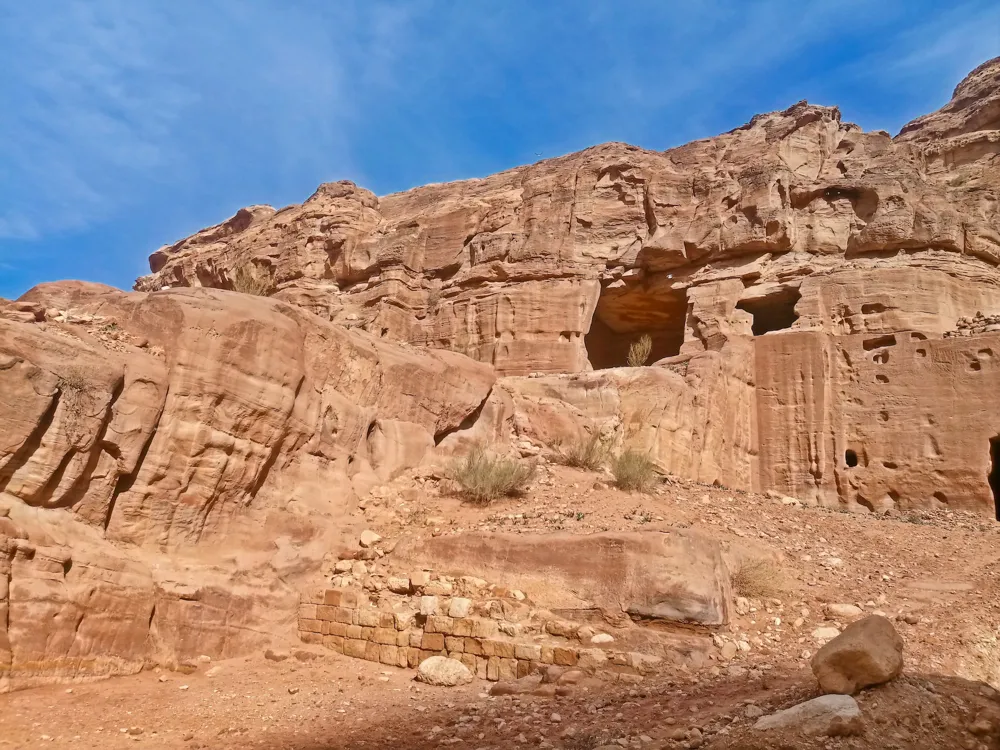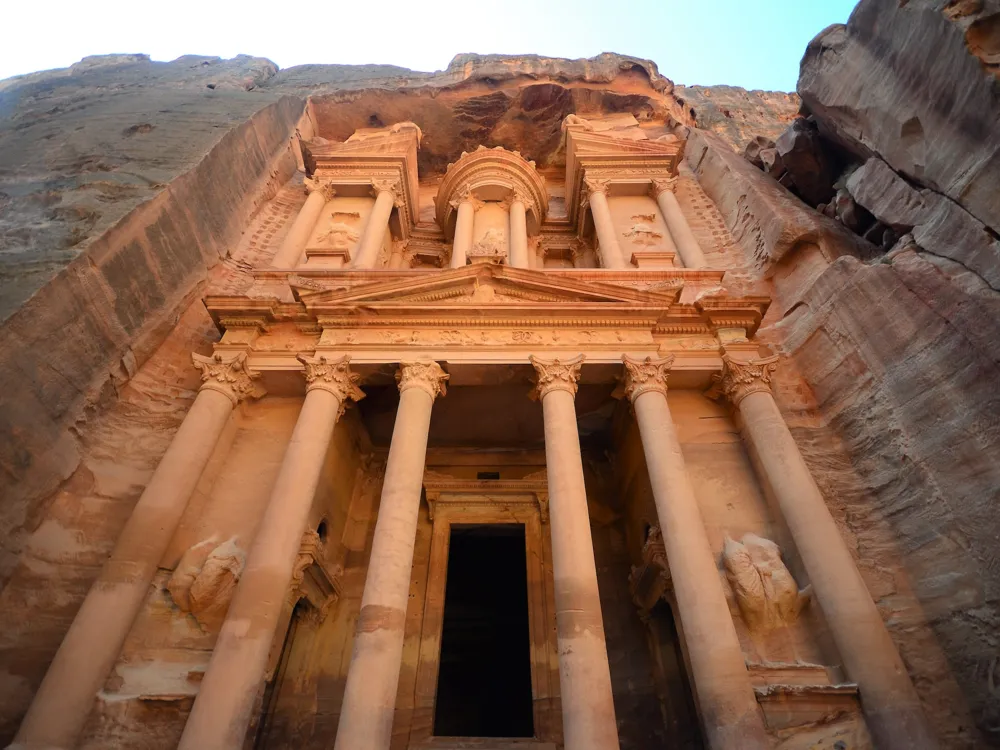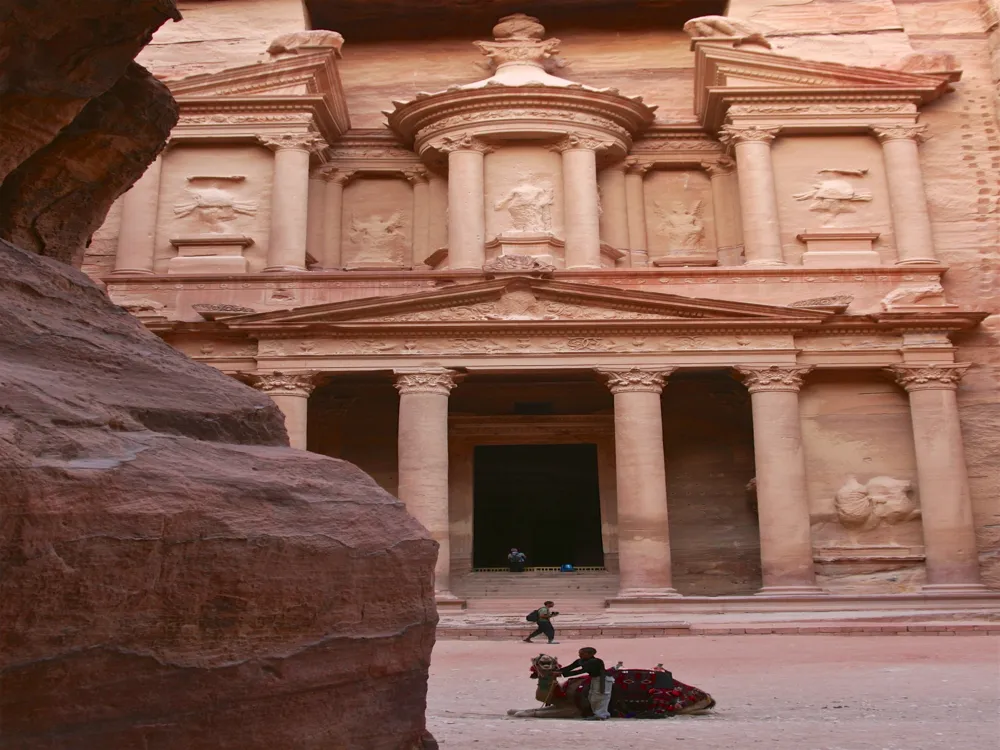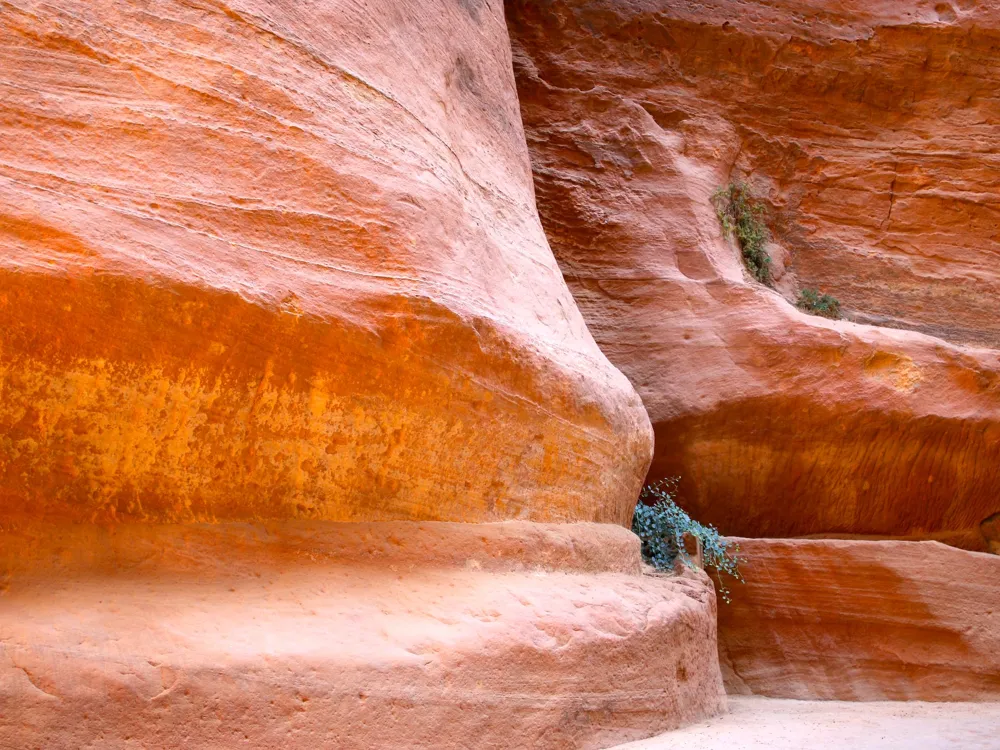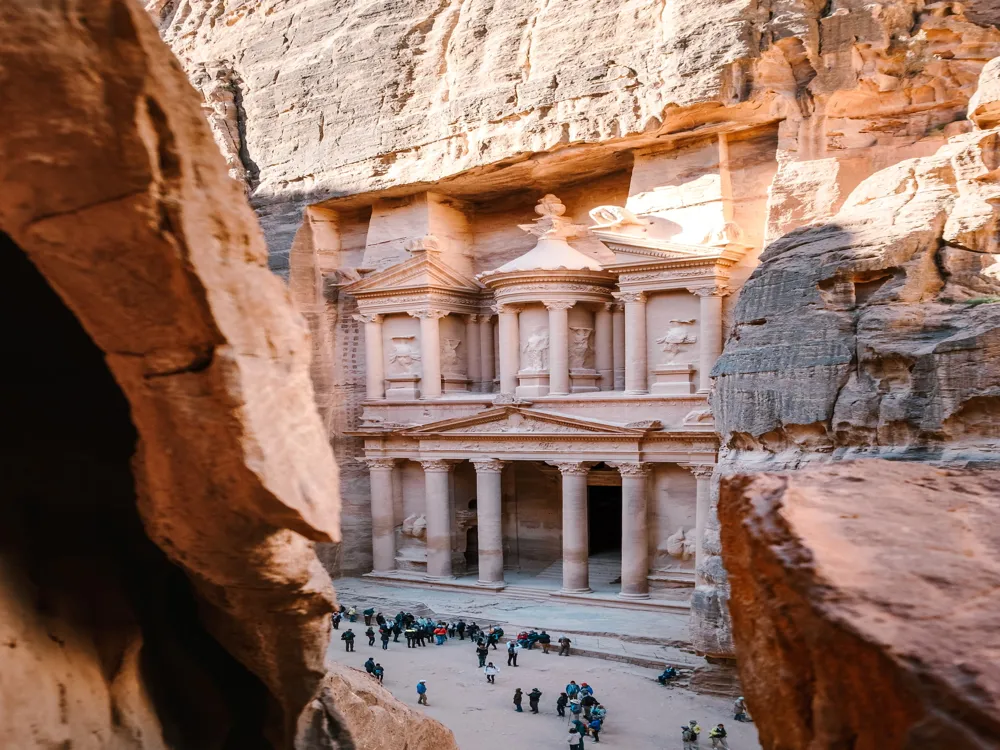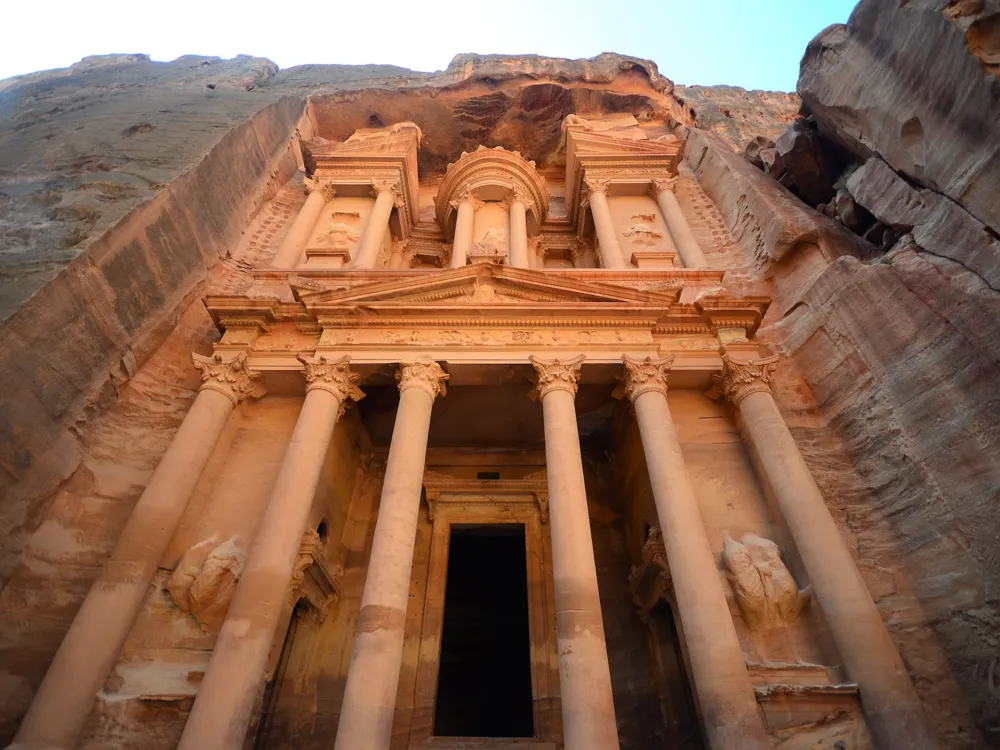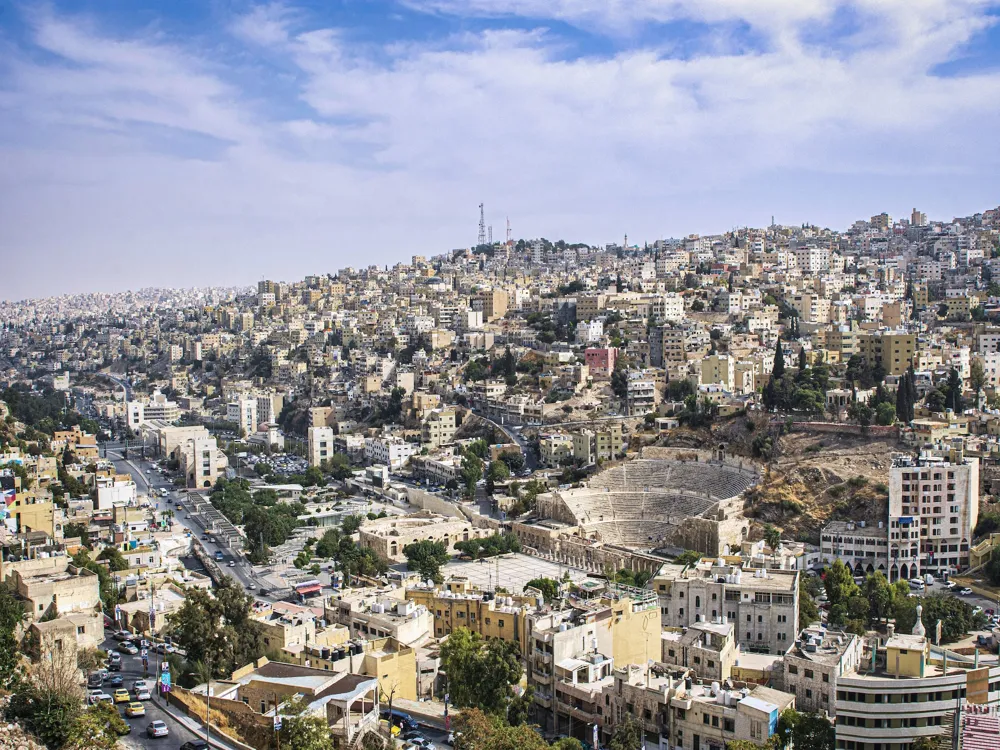The Dam of Petra, an ancient marvel, stands as a testament to human ingenuity in the heart of Jordan's famous archaeological city, Petra. This grand structure, dating back to the 1st century BC, was crucial in controlling the water supply to the city, which was a bustling center of trade and culture. The Nabataeans, known for their mastery in water conservation, engineered this dam to protect Petra from seasonal flash floods and to store water for the arid months. The Dam of Petra showcases a blend of functionality and aesthetics, a hallmark of Nabataean architecture. Its strategic location and design played a pivotal role in Petra's sustainability, allowing it to thrive in the harsh desert environment. The history of the Dam of Petra is closely intertwined with the rise and fall of the Nabataean civilization. Built by these ingenious people, the dam was a critical component in their sophisticated water management system. The Nabataeans were experts in hydraulics, and their water technology included dams, cisterns, and aqueducts, which were crucial for their survival in the desert. The Dam of Petra, in particular, was instrumental in harnessing the seasonal rains, which could otherwise be destructive. Over the centuries, the dam has witnessed numerous restorations and modifications, reflecting the changing needs and technological advancements of the civilizations that followed. The construction and design of the Dam of Petra are remarkable feats of ancient engineering. Built using locally sourced materials, the dam features a blend of sandstone blocks and earthen materials. Its design reflects a deep understanding of the local geography and hydrology. The curved shape of the dam was strategic, intended to effectively disperse the force of the water. This curvature, combined with the use of chiseled stones and a robust foundation, ensured the dam's stability and longevity. The Nabataeans also incorporated a spillway and a series of channels to direct the water flow, further showcasing their advanced knowledge in hydraulics. The Dam of Petra had a profound impact on the development and sustainability of Petra. By effectively managing the water resources, the dam enabled the Nabataeans to transform a harsh desert into a thriving urban center. It ensured a steady supply of water for drinking, agriculture, and daily use, which was a remarkable achievement in such an arid landscape. The dam also protected the city's intricate architecture from water damage caused by flash floods. Its role in Petra's prosperity cannot be overstated, as it was the backbone of the city's water management system, a key factor in its historical success. The Architecture of the Dam of Petra is a marvel of ancient engineering and design. The Nabataeans, with their sophisticated understanding of water management, crafted a structure that was not only functional but also aesthetically pleasing. The dam's architecture is a reflection of the unique Nabataean style, which combined elements of Hellenistic, Roman, and native influences. The use of locally available sandstone, carved with precision, gave the dam a distinctive appearance that blended seamlessly with the surrounding rockscapes of Petra. The Nabataeans employed advanced engineering techniques in the construction of the Dam of Petra. They mastered the art of stone carving, which is evident in the precise cuts and joints in the dam's structure. The use of gravity-fed channels and cisterns, integrated into the dam, showcased their understanding of hydraulics. The Nabataeans also implemented an early form of waterproofing, using a mixture of crushed limestone and other materials to seal the joints and prevent water seepage. This attention to detail in the construction process highlights the advanced level of Nabataean engineering skills. The architectural elements of the Dam of Petra reflect a blend of functionality and artistry. The dam features a series of arches and channels, which were not only practical in water distribution but also added an element of visual interest. The use of intricate stone carvings and bas-reliefs on certain sections of the dam added to its aesthetic appeal. These carvings often depicted cultural and religious motifs, indicating the importance of the dam in the Nabataean society. The integration of these artistic elements into a utilitarian structure is a hallmark of Nabataean architecture. The cultural significance of the Dam of Petra lies in its representation of the Nabataean civilization's achievements. It stands as a symbol of their advanced understanding of architecture and engineering. The dam was not just a functional structure but also a cultural landmark, showcasing the artistic and technological prowess of the Nabataeans. It played a vital role in the daily life of Petra's inhabitants and was likely a point of pride for the city. Today, the dam continues to captivate visitors with its historical and architectural significance, serving as a window into the ancient world of the Nabataeans. Early morning or late afternoon are the best times to visit the Dam of Petra. The soft light during these hours enhances the natural beauty of the sandstone structures and provides relief from the midday heat. Avoiding peak hours also means fewer crowds, allowing for a more serene experience. Ensure to bring plenty of water, comfortable walking shoes, sunscreen, and a hat. The climate can be quite hot and arid, so staying hydrated and protected from the sun is crucial. A camera is also recommended to capture the stunning architecture and scenic views. Consider taking a guided tour to gain deeper insights into the history and architecture of the Dam of Petra. Knowledgeable guides can provide fascinating details about the dam's construction, its significance in Nabataean culture, and its role in the ancient city of Petra. Be mindful of local customs and cultural sensitivities when visiting the Dam of Petra. Dress modestly, and always ask for permission before taking photographs of local people or private properties. To reach the Dam of Petra, visitors can travel to the city of Petra, located in southern Jordan. The nearest major city is Amman, from where you can take a bus, rent a car, or arrange a private transfer to Petra. The journey offers a scenic view of Jordan's diverse landscapes. Once in Petra, the dam is accessible on foot, as part of the Petra Archaeological Park. Visitors can walk through the Siq, a narrow gorge leading to the city, and experience the stunning entry into Petra, with the Dam of Petra being one of the first significant structures visible upon arrival. Read More:Overview of the Dam of Petra
History of the Dam
Construction and Design
Impact on Petra
Architecture of the Dam
Engineering Techniques
Architectural Elements
Cultural Significance
Tips When Visiting The Dam
Best Time to Visit
What to Bring
Guided Tours
Respect Local Customs
How To Reach The Dam
The Dam
Petra
₹ 35,900 onwards
View petra Packages
Weather :
Tags : Dam
Timings : 0600 to 1800 in the summer, 0600 to 1600 in the winter
Entry Fee : None
Planning a Trip? Ask Your Question
Petra Travel Packages
View All Packages For Petra
Top Hotel Collections for Petra

Private Pool

Luxury Hotels

5-Star Hotels

Pet Friendly
Top Hotels Near Petra
Other Top Ranking Places In Petra
View All Places To Visit In petra
View petra Packages
Weather :
Tags : Dam
Timings : 0600 to 1800 in the summer, 0600 to 1600 in the winter
Entry Fee : None
Planning a Trip? Ask Your Question
Petra Travel Packages
View All Packages For Petra
Top Hotel Collections for Petra

Private Pool

Luxury Hotels

5-Star Hotels

Pet Friendly







